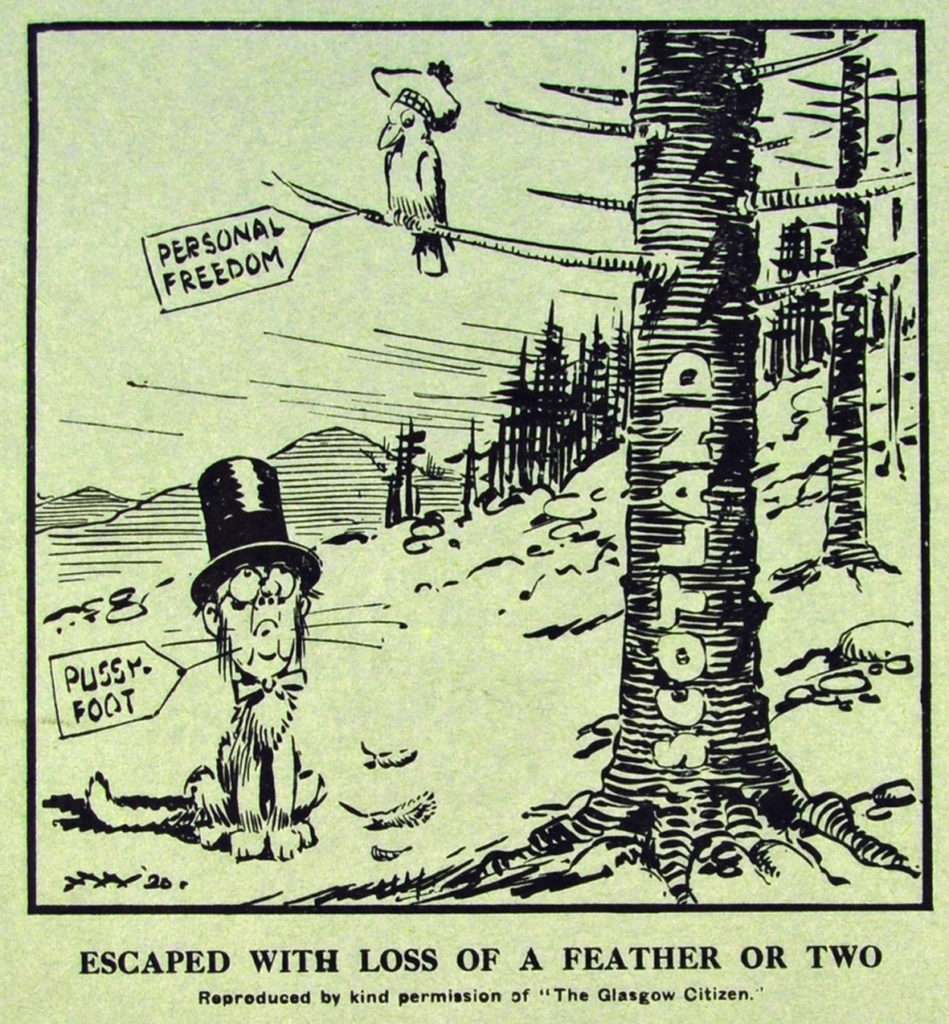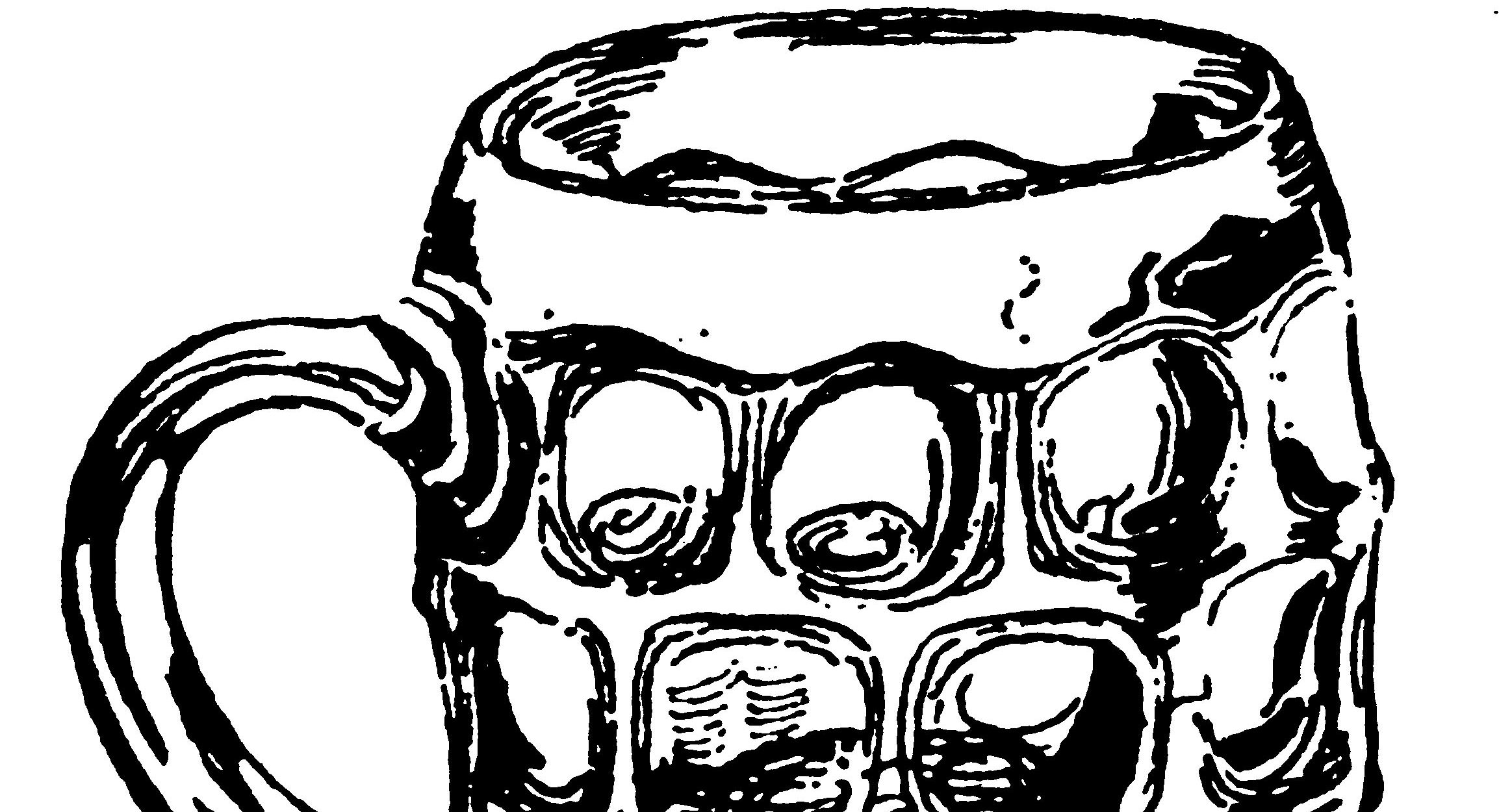Where does the UK stand in the league table for consumption of alcohol per head? You’re probably saying to yourself something like, “oooh, we must be pretty high up – not as much as the Czechs, surely, they’re notorious for knocking back the pilsner, and I bet the Poles still drink lots of vodka, and doesn’t little Luxembourg have some weirdly high consumption per head figure because all its neighbours pop across the border to buy cheap booze? So, I dunno, fourth?”

If you’ve caught any of the neoprohibitionist nonsense from organisations such as the Institute for Alcohol Studies – descended directly from the International Order of Good Templars, a campaigning temperance group founded in the 1850s – and the Alcohol Health Alliance, both currently crowing because they have managed to persuade the Scots to adopt minimum unit pricing of alcohol, and both pushing hard to have the same policy adopted in England and Wales, then you’ve probably subconsciously absorbed the idea that here in this green and sceptical isle we drink lots and lots, enough to have a problem about it, and certainly more than most others.
In fact, on average, we don’t. And in fact, on average, the UK comes 25th out of a list of 27 European countries for alcohol consumption per head (*). Third from bottom. Not “qualifying for the Champions League” levels at all – “relegation into the Championship” levels. Of the other nine leading economies in the world, only three – China, Japan and India – drink less alcohol per head than the UK does. The Germans drink more than 40 per cent more alcohol per head than we do. The French drink 24 per cent more. Even the United States drinks slightly more, at 7.1 litres of pure alcohol equivalent per head, against the UK’s 7 litres (all 2015 figures).
Other statistics also show that the UK today is a relatively sober nation. Overall alcohol consumption is 9 per cent down on 2001. Convictions for drunkenness are barely a third of the level they were even in the Second World War, when beer was weak, wine and spirits unavailable and your local pub, if it hadn’t been bombed to bits, was shut because of rationing; and only a tenth of what they were in 1973, when we all had long hair and loon pants and a pint cost 15p (though current statistics have probably been affected by the rise in fixed penalty notices). The number of positive breath tests has dropped two thirds since 1980, and more than halved since 2000. The percentage of 11 to 15-year-olds who have ever had an alcoholic drink is down by more than a third since 2001, and the percentage of 11 to 15-year-olds who had an alcoholic drink “in the last week” had plunged by more than two thirds.
None of this matters to the wowsers of the Institute for Alcohol Studies and the Alcohol Health Alliance, however. They point to the fact that some people abuse alcohol, and they have convinced themselves that the answer to that is the nonsensical “whole-population model”, which claims that if you lower total alcohol consumption, then “problematic” alcohol consumption will fall as well. Unfortunately, there is absolutely no evidence to show this is true.
What is more, the figures from the Sheffield Alcohol Pricing Model, which was put together by academics at the University of Sheffield, and has been used to justify the introduction of minimum unit pricing, look instinctively ridiculous and untenable: the model claims that a minimum price of 50p per unit of alcohol (a unit being 10ml/8gm of pure C2H5OH) would result in a “harmful” drinker, defined as someone who drinks 50 units a week (equivalent to just under three pints of medium-strength beer a day) cutting back consumption by half a pint a day, or increasing their spending by £2.88 a week. That’s less than the price of two corner-shop sandwiches: some deterrent.
The Institute for Alcohol Studies and the Alcohol Health Alliance, of course, say it’s not just about the heavy drinkers, that minimum unit pricing will also make the moderate drinker cut back, by two thirds of a unit for men and half a unit for women, per week. That’s cutting back by a fifth of a standard glass of red wine for women, and just over a quarter of a glass of wine for men. Per week. This, they claim, will “slash” the occurrence of high blood pressure, diabetes and heart disease.
Paul Chase, in his excellent (though badly titled) book Culture Wars and Moral Panic: The Story of Alcohol and Society, sums it up very well:
“This is really all about symbolism and control. Once government becomes the ‘price-giver’ for the licensed trade, the image of alcohol as ‘no ordinary product’, and as something dangerous that we all need protecting from, becomes official policy. The Medical Temperance view of alcohol is in the ascendance. Their view chimes with government – not least because it gives [governments] a health-concern smokescreen behind which they can introduce what is nothing more than a sin tax.”
Minimum unit pricing is apparently now under consideration for England. If you want to stop this nannying and pointless nonsense, support Drinkers’ Voice, follow it on Twitter, and help campaign to be able to enjoy the pleasures of alcohol, moderately and sensibly.
(*) BBPA Statistical Handbook 2017, p95


Wow—
I am all about improving public health but it seems our governments have more important fish to fry on that front. For starters—
-opioid epidemic
-exploding obesity
And as alluded–use a data driven approach or have something that shows that regulation will change behavior before a whole new set of laws, enforcement, government, etc……………………..
Governments aren’t concerned with individuals health, safety, welfare, protection etc. ad nauseum… they are always looking for a new tax vector to leach more off us “debt slaves” .
“I eat when I’m hungry, I drink when I’m dry, if the good Lord is willing, I’ll live till I die” – A quote from me I started about 20 years ago.
Alcohol is like every other intoxicant that human beings have used since prehistoric times: pleasurable and low-risk in modest amounts, increasingly dangerous as consumption rises. But alcohol alone remains (mostly) legal, and the people crying “neoprohibition” at attempts to regulate it never seem to have much to say about ACTUAL prohibition.
When a society licenses (and celebrates) one intoxicant while banning (and demonizing) all the others, people can’t find their pleasure in the drug that does them the least harm. Our alcohol-or-nothing policy hurts those genetically predisposed to alcohol addiction; it hurts people around them; and it hurts people like you who feel your rights infringed by clumsy government efforts to deal with the illness, death, and misery caused by alcohol abuse.
I’m here only because I’m tracking the term “neoprohibitionist,” which I have yet to see used to describe anything resembling actual prohibition. If you want to hear some REAL “neoprohibitionist lies,” mosey on down to your local courthouse and observe a drug prosecution.
That’s why it’s called “neoprohibition”. Its aims are the same as the original prohibitionists: to see alcohol use banned, or very severely restricted. The failure of the original prohibitionists in 1920-33 to achieve the glorious future they envisioned means their descendants won’t call themselves prohibitionists or overtly link themselves to their forerunners or call outright for a total ban on alcohol, butthat’s what they want.
[…] as well, mainly bloggers celebrating a particular alcoholic beverage (Wine Curmudgeon, Zythophile) or the joys of drunkenness (Brutal Hammer). I have no way to divine their ties to the industry, […]